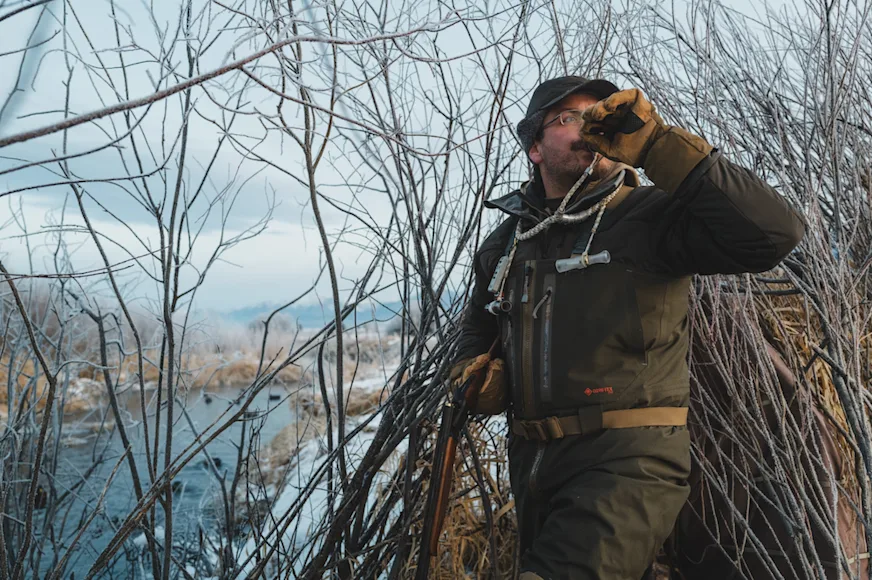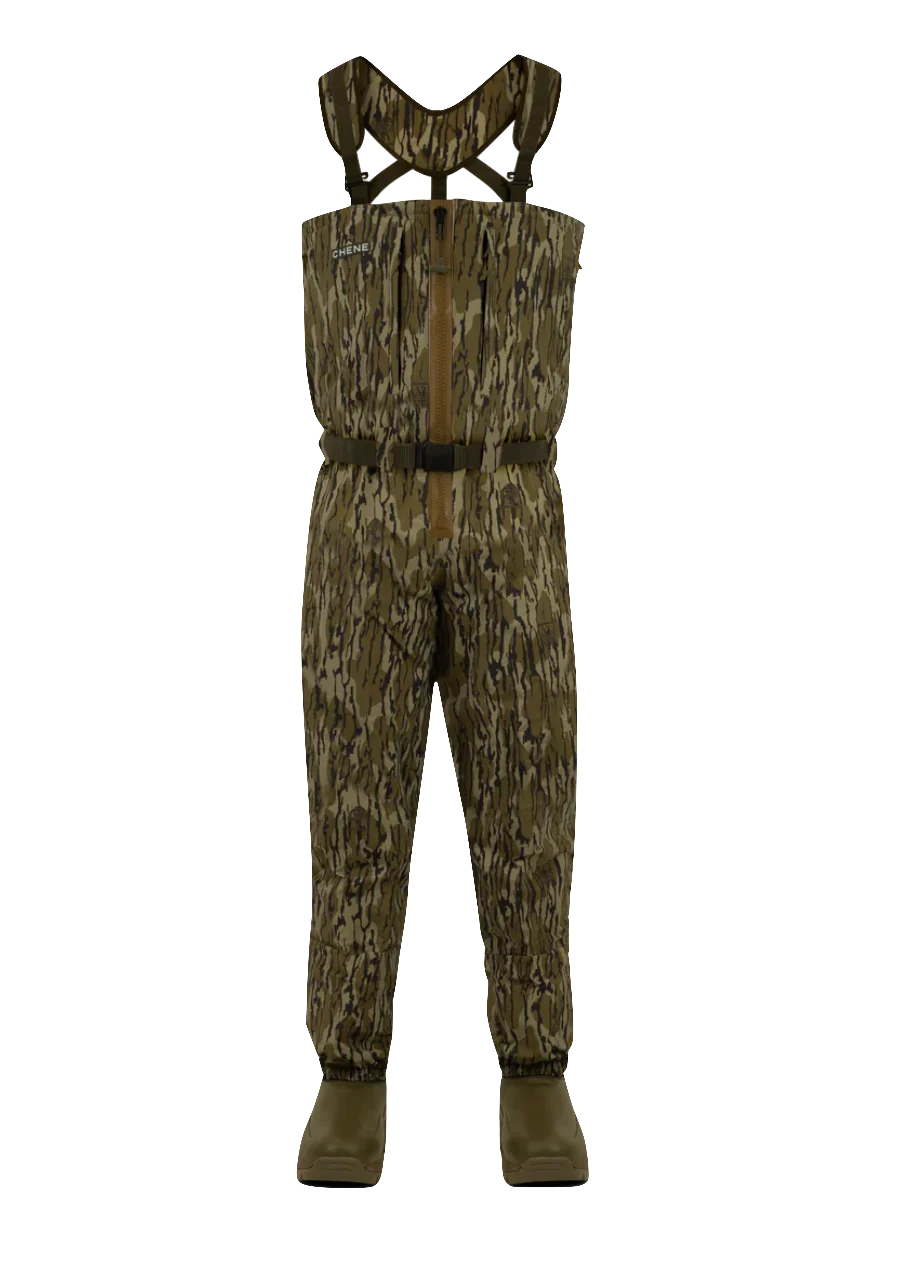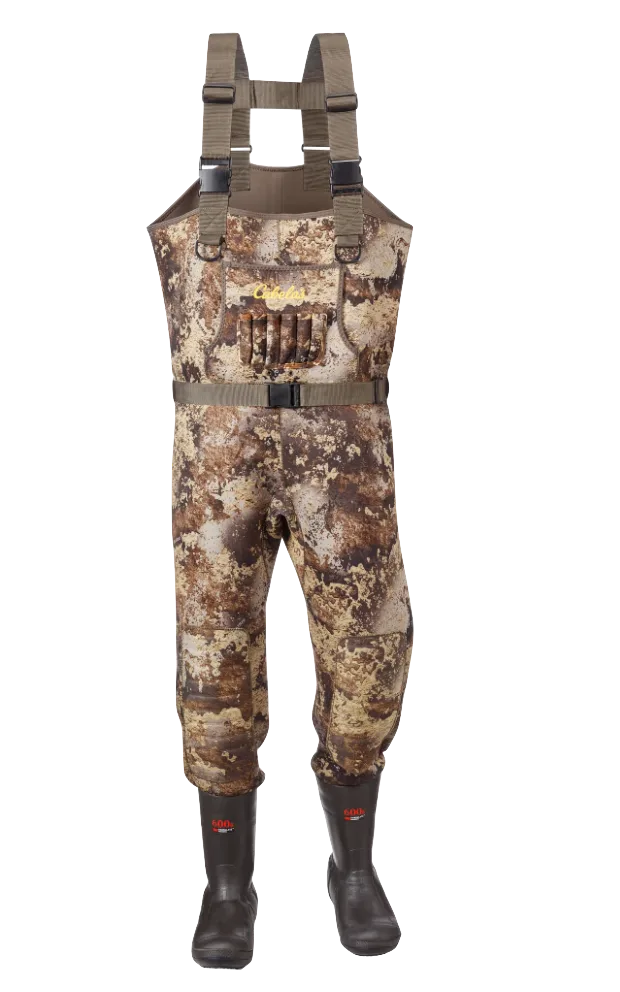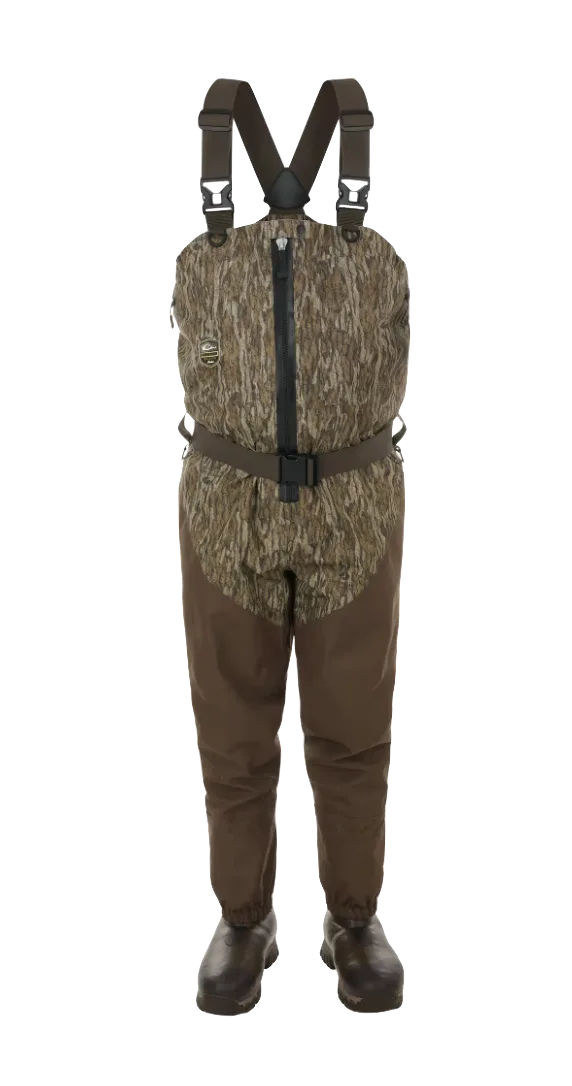We may earn revenue from the products available on this page and participate in affiliate programs. Learn more ›
Besides your shotgun, duck hunting waders are arguably the most important piece of equipment a waterfowl hunter will own. Wetlands are nasty places for gear and your waders take a beating. When they eventually start to leak (and they will), warranties and repair options are important for wader longevity. The key is to find the waders that will last you multiple seasons before needing repairs.
If you were to champion a single group of hunters as gear junkies, it would most likely be us: waterfowl hunters. Guns, boats, motors, decoys, blind bags, and waders are what we talk (argue) about when the birds aren’t flying. Everyone has their opinions on what makes the best duck hunting waders, but we narrowed down our favorites after testing materials, construction, insulation, and durability below.
Best Overall: Sitka Delta Pro Zip GTX Wader
Best Neoprene: Cabela’s Classic Series II Neoprene Boot-Foot Waders
Drake Waterfowl Systems Guardian Elite Front Zip Breathable Waders
How We Picked The Best Duck Hunting Waders
We have a combined 50 years of waterfowl hunting experience, and in that time, we have used our fair share of hunting waders. From early-season teal hunting in South Texas to king eider hunting in Alaska, we have tested duck hunting waders in nearly every condition. Our authority on this subject comes not only from understanding what makes a strong hunting wader but also from knowing (from experience) what makes a poor wader.
We tested our waders in the ocean, intertidal marshes, flooded timber, freshwater creeks, swampy bayous, blazing heat, snowstorms, icy rivers, and every other piece of habitat a duck or goose might call home. We looked for the wader that can excel in every one of these conditions because, as you already know, waterfowl hunters are willing to do whatever it takes to fill their strap—and the best duck hunting waders must meet that dedication.
We based our selection on the following criteria:
Wader Design: Is the wader stocking-foot or boot-foot?
Materials: What materials is the wader made from?
Comfort: Can you hunt in the waders day after day and feel comfortable?
Insulation/Breathability: Are the waders insulated? Are they breathable? Will you get too cold or too hot in them?
Durability: How many seasons will the waders last? Can they withstand your style of hunting?
Boot Construction: How supportive is the boot? Is it insulated?
Warranty: Do the waders have a warranty or repair program?
Best Overall: Sitka Delta Pro Zip GTX Wader
Specs
Wader Type: Gore-Tex boot foot
Boot Sizes: 8-14
Wader Sizes: Small to 3XL
Camo: Optifade Marsh, Optifade Timber, and Earth
Pros
Super comfortable and durable
Knee pads
Pack down compactly for travel
Cons
Expensive
Uninsulated, which not everyone will like
The Delta Pro Zip GTX is Sitka's new flagship duck wader. I was lucky to get my hands on a pair shortly after the release over the summer. Since then, I've hunted in these waders all through teal season and into the regular duck season. Just like the original Delta Pro waders, the new GTX model is comfortable, durable, and versatile. Most importantly, Sitka kept all the features that make this wader the best on the market while addressing the shortcomings of the original design.
Let's start with what makes this wader great. First and foremost, the Delta Pro wader is as comfortable as a duck wader can be. It is breathable for early teal, but still spacious enough to layer up for late January blizzard hunts. The zipper is fully waterproof, and the adjustable suspenders don't interfere with your gun mount. But the best feature is still the knee pads. I rave about these knee pads on almost every hunt. They make getting in and out of the boat easier, kneeling on the bank more comfortable, and common tasks like grassing blinds and cutting grass bearable.
Where the previous Delta waders fell short was in the boot. It was bulky, had a loose fit, and wasn't as comfortable as other wading boots. Sitka's designers clearly heard the complaints because the new boot is way better. Instead of feeling like a ski boot, the new GTX wader boots have a shoe-like feel. They are comfortable to stand in, easy to walk in, and don't feel like you're dragging around a giant piece of rubber.
The obvious drawback is the $1200 price tag. That's hard to justify for any wader, even if they do have kneepads and comfortable boots. That said, if you're looking for the absolute best duck wader money can buy, the Delta Pro Zip GTX is it. And when you eventually rip your waders on barbed wire, rocks, or other sharp objects, Sitka's repair team will make sure they're professionally patched and returned to you as good as new. —Ryan Chelius
Best Neoprene: Cabela’s Classic Series II Neoprene Boot-Foot Waders
Specs
Wader Type: Neoprene boot foot
Boot Sizes: 6-13
Wader Sizes: Regular
Camo: True Timber DRT, Mossy Oak Bottomland, True Timber Prarie
Pros
600-gram 3M Thinsulate Ultra Insulation
Reinforced knees
Adjustable webbing suspenders
Front handwarmer pocket with built-in shell holder
Cons
Very warm in early season
It may only last a few seasons
For a neoprene wader, it is tough to beat Cabela’s Classic Series. I’ve been wearing an older model of the classic series for over a decade, and I am only on my second pair. Considering the affordable price, I am thrilled (and shocked) at how long these waders have lasted me. My season starts in early October near the Canadian border and ends four months later on the salt marshes of Long Island. During this stretch, my waders see a wide variety of conditions, including early-season high temps, steady rain, snow, salt water, and an endless amount of mud. They are tried and true.
The first feature to touch on is the neoprene construction. There is no way around it—these waders are thick and heavy. During mid- and late-season, the Cabela’s Classic Series is comfortable and warm. I can usually get away with a baselayer and a pair of sweatpants under these waders and remain comfortable. When the ice starts to accumulate in late January, these waders really shine. The 600-gram 3M Thinsulate Ultra Insulation will keep your entire lower half warm with only a few layers.
Early season is a different story. These waders do get hot and sweaty if you’re hunting in warm climates. It’s doable, but hunters consistently pursuing ducks and geese in warm weather should look for a more breathable wader. The durability of these waders is slightly above average, which is what you’d expect at its price point. I did puncture a hole in mine while wading through flooded timber, but I’m not sure if any wader could have stopped that sharp stick. After a couple of seasons, it’s not unlikely you’ll spring a leak. But with a simple wader repair kit, you should be back hunting with them in no time. —Ryan Chelius
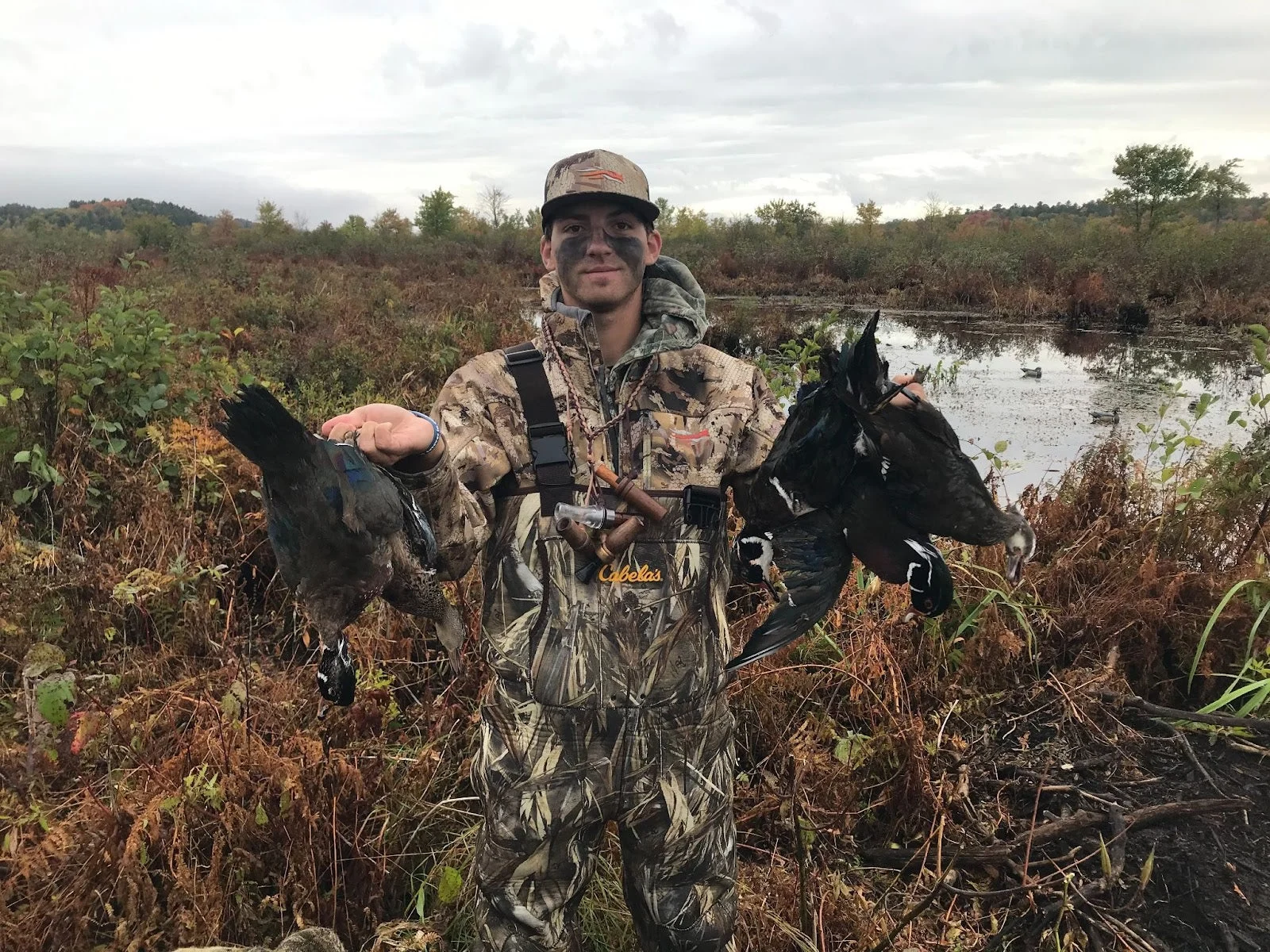
Chene Gear Wader
Specs
Wader Type: Gore-Tex boot foot
Boot Sizes: 6-14
Wader Sizes: XXS to 3XLT
Camo: Mossy Oak Original Bottomland, Mossy Oak Bottomland, and Shadow
Other Features: Waterproof front zipper, custom insulated boot, unique shoulder harness
Pros
The boot is unbelievably comfortable and won’t pull off
Unique shoulder harness distributes weight
Zipper makes on-and-off easy no matter how many layers you have on
Cons
Quality is expensive
They are uninsulated, though I consider this a plus
Chene Gear is a newcomer to the wader game, but with their excellent breathables I’m sure they will be around for the long haul. I had the privilege of wearing a pair for 30 or so days last season, and they quickly impressed me. The full-length zipper, thoughtful suspension system, and top-notch boots made them an instant favorite.
The floor of the coastal marshes I hunt consists of nearly bottomless muck. Having a boot pulled off by this goop is the norm, but at no point did my feet ever come loose. The excellent fit is provided by a series of cutouts on the side that utilize neoprene to capture your ankles without creating any pressure points. Deep lugs on the sole provide plenty of traction but shed mud with ease.
A full-length zipper makes adding and subtracting layers a breeze, letting you take advantage of their breathable nature. Support is provided via a unique suspension system that utilizes a broad yoke—even swinging hard for that diver escaping the spread doesn’t put any strain on any particular spot. The straps attach and adjust via a webbing ladder and low-profile metal buckle, so there’s nothing to interfere with mounting your gun.
These are the best waders I’ve ever worn, but at $1100, they are also the most expensive. You do get what you pay for, and these will last a lifetime with reasonable care. And if you do manage to tear them on a barnacle or crossing a barbed wire fence, just send them back for repairs. Their fully-staffed Memphis, Tennessee shop promises fast turn-around so you won’t miss your next hunting trip if the unthinkable does happen. —Joseph Albanese
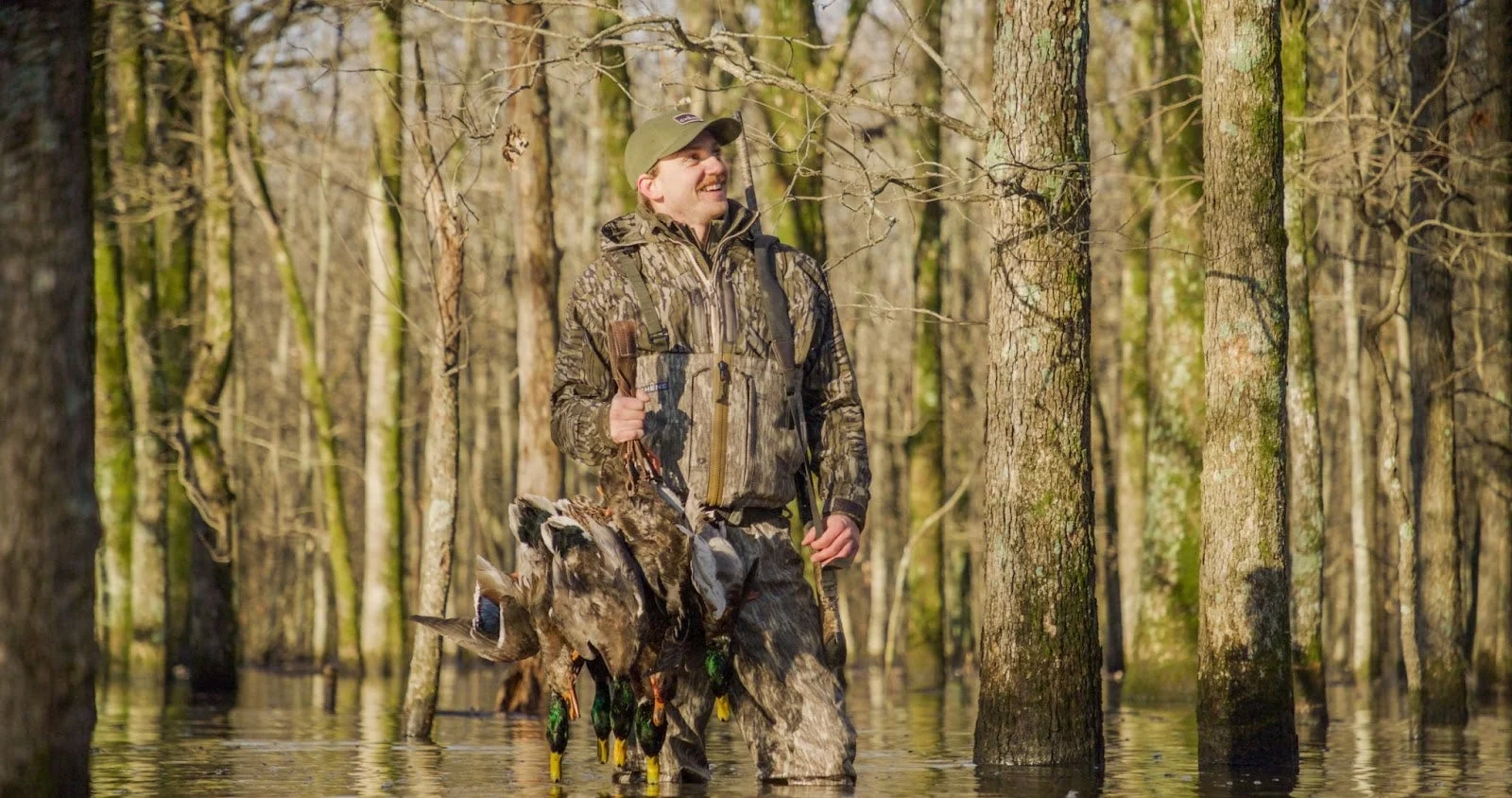
Duck Camp Wader
Specs
Wader Type: Nylon/poly outer layer with waterproof and laminate coatings, boot foot.
Boot Sizes: 7-13
Wader Sizes: XS-2XL, shorts and talls available
Camo: Wetlands and Timber (Duck Camp proprietary patterns)
Other Features: Large zippered security pocket behind handwarmer pocket, three shell loops and daisy chain for carabiners on the belt
Pros
Diagonal zipper allows them to have a full-size, pass-through front pocket
Molle attachments allow customization on the front panel
Extremely high waterproof rating
Cons
With 1,000 grams of Thinsulate, boots may not be warm enough for late season northern hunts
Fabric is slightly stiffer than other breathable waders
Duck Camp is a new name in waders. The company has been around for a few years, selling shirts and pants that I always thought were as much lifestyle clothing as they were hunting gear. But waders are serious, technical hunting gear, so the idea of Duck Camp waders took some getting used to. I had the chance to get acquainted with them this fall.
The feature that makes them unlike any other wader is the diagonal zipper. By off-setting the zipper, Duck Camp designers could include a full length, pass-through front pocket. A pass-through pocket that lets one hand warm the other, something everyone loves on waders, and it’s a feature that you sacrifice with traditional zip-front designs. Here you get both. You also get molle attachments on the front, and mine will have D-rings and a shotshell holder on them by next season.
The outer shell of these waders is a tough nylon/poly chosen to be extremely puncture-resistant, and it’s backed by both a waterproof laminate layer and a waterproof coating. The zipper itself is a Tizip, which is not as widely known as YKK. If you want to educate yourself on zippers, you can read pages of arguments on diving forums about which type is better for dry suits, but I will save you the trouble and tell you both have passionate fans. So, the zipper works. It’s also easy to use, and I liked the way the offset design gave me easy access to my right front pants pocket. The waders also have removable knee/shin pads.
Duck Camp is a southern brand, and that’s reflected in the fact that the boots have only 1,000 grams of insulation, while most other waders are up in the 1,600 range. If you wear these in the cold, add really warm socks. The slight downside of the tough shell is that these waders are a little bit stiffer than other breathables, but the fact they come in so many body and height sizes means most people can find a pair that gives them a trim fit. Once they’re on, you never notice the difference in material, and they’re just as easy and comfortable to move around in as any other wader. —Phil Bourjaily
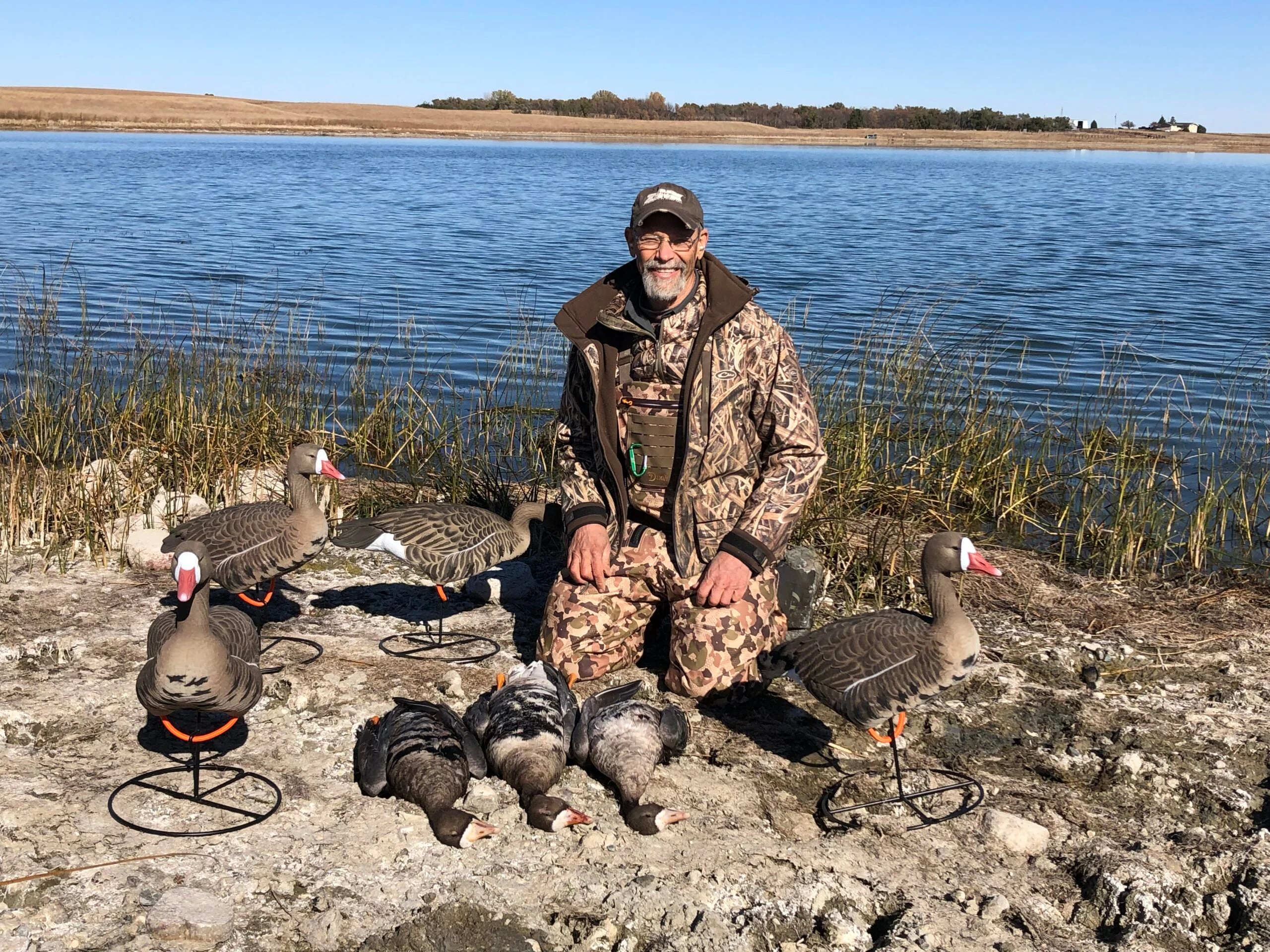
Frogg Toggs Amphib Neoprene Boot-Foot Chest Waders
Specs
Wader Type: Neoprene boot foot
Boot Sizes: 7-13
Wader Sizes: Changes based on foot size
Camo: Realtree Max 5, Mossy Oak Bottomland
Other Features: Chest handwarmer pocket, internal phone/gear pocket
Pros
Comfortable for the price
Triple-finished seams to prevent leaks
Insulated for fall and winter hunts
Cons
Waders run big, so downsize
While duck hunting may be one of the most exciting pursuits to do in a pair of waders, it is also one of the most gear-intensive. I learned this the hard way, and when it came time to find a pair of hunting waders, I opted for the budget-friendly Frogg Toggs Amphib wader. At well under $200, they certainly fit the bill for a budget-friendly option, but after two seasons and multiple states hunted, I am happy to say they also meet the performance criteria.
Constructed out of 3.5mm neoprene, they are insulated for fall hunts, and with a couple of added layers, they work great in the late season. I was plenty warm with an added wool base layer during a cold December hunt last winter. As for comfort, the boots fit well but run large. I typically wear an eleven but opted for a ten, and I am happy I did. In addition to being well insulated, the knees are reinforced to prevent leaks in high-wear places.
After two seasons, my Amphib waders are still running strong, and I don’t anticipate replacing them any time soon. The one complaint I have is that the wader size changes based on the boot size. This is best for taller people as the waders run big compared to the boot size. —R.C.
Drake Waterfowl Guardian Elite Front Zip Waders
Specs
Wader Type: Guardian Elite 4-layer DWR Boot-Foot
Boot Sizes: 8-14
Wader Sizes: Short and slim, regular
Camo: Mossy Oak Bottomland, Realtree Timber, Mossy Oak Shadow Grass
Other Features: Two front zippered call pockets
Pros
TIZIP MasterSeal 10 front zipper
X-Crossing-Back shoulder straps
1600g Thinsulate Buckshot Mudder Boot
Breathable
Cons
Boots can be too warm
Not as durable as more premium offerings
The Drake Waterfowl Guardian Elite Front Zip breathable waders can be worn everywhere, from early-season wood duck holes to mostly frozen late-season marshes. I know because I did it and was comfortable the entire time. The secret is the liner that allows waterfowlers to adjust the insulation on the fly, staving off the chill before the sun rises and removing it in an instant when the mercury climbs.
The tear-away liner is body-mapped to place insulation exactly where it is needed, with 125 grams in the front and 200 in the back. Hook and loop tabs around the waist and down the sides let them pull off just like a pair of warm-up pants without having to remove the waders.
The zipper featured in the wader’s name is another high point, letting you put them on and take them off easily. Reinforced knees stand up to in-field abuse, so you can kneel on barnacle-crusted rocks without worry. The boots are cut just like the ones you would use for field hunting, so they are comfortable enough for even sunrise to sunset hunts.
The boots feature 1600 grams of Thinsulate, which is great on really cold days but can be a bit much in the early season. This wader costs half of what the premium offerings from Sitka and Chene go for, so don’t expect the same level of refinement. But for around $500, you can get some of the best features currently found in waders. —J.A.
What To Consider When Choosing Duck Hunting Waders
Two of the most important considerations that will determine the best duck hunting waders for you are your style of hunting and how often you hunt. These two factors can help point you in the right direction towards premium waders, casual hunting waders, or something in between. Once you know what you need out of your waders, you can begin to consider these other factors below.
Materials
Most duck hunting waders are made from neoprene, a synthetic rubber that provides good insulation and a strong waterproof seal. This thick rubber design is the choice of many waterfowlers and excels in cold temperatures, providing great insulation.
Recently, many wader manufacturers have migrated to a more breathable and lightweight design. These materials usually consist of a Gore-Tex or heavy-duty nylon construction that provides a watertight seal. The benefits of using lighter materials include improved breathability, mobility, and all-season use. Hunters should remember that if they choose to go with a lighter material like Gore-Tex, they will have to implement a good layer system for colder temperatures.
Stockingfoot or Boot Foot
The majority of duck hunting waders use a boot foot construction. This means that the boot and wader are one whole piece rather than using a separate wading boot. The boot foot design makes it easy to wader up but provides less foot support than a stocking foot wader paired with a wading boot. Stockingfoot waders (seen more commonly in fishing) are more susceptible to trapping mud and rocks between the wading boot and wader. For a hunting-specific wader, boot-foot construction is the way to go.
Style of Hunting
How and where you hunt ducks will also play a role in deciding on what waders to buy. Many states open with an early-season teal hunt in September. This often means high temperatures and bugs. Breathable waders are a godsend when hunting in heat and allow you to remain as comfortable as possible.
It is also important to consider your style of hunting. Are you canoeing in and portaging over beaver dams? Do you boat to your blind and sit all day? Will you move around to retrieve birds and reset your spread? The key component here is mobility. For most waterfowlers, duck hunting is a pretty mobile pursuit. Hunters who often find themselves on the move can also benefit from breathable and lightweight waders.
Insulation and Layering System
We’ve already talked about it multiple times, but insulation is a key consideration when it comes to duck waders. Many hunters prefer neoprene, especially in the late season, because they provide strong insulation. Although that doesn’t mean you’ll be cold in Gore-Tex or breathable waders. Hunters who prefer lightweight waders need to put some thought into their layering system to ensure they remain warm and comfortable in the marsh. A well constructed layering system can provide the perfect amount of insulation and allows you to remain comfortable from early September teal season to late season mallards.
FAQs
Q: Are waders necessary for duck hunting?
Other than field hunting and a few specific scenarios, waders are necessary for duck hunting. If you plan to hunt in or around water, which is on most duck hunts, you want a pair of reliable waders.
Q: How long do hunting waders last?
The longevity of a wader depends on materials, construction, and usage. A pair of premium waders like the Sitka Delta Zip Wader and Chene Gear Waders should last you years, and if they do leak, both waders have strong warranties to make sure they are the last wader you ever purchase. If you decide to go with a budget option like the Cabela’s Classic Series or the Frogg Toggs Amphib wader, you should get at least two to three seasons before you encounter any issues.
Q: How do you pick duck waders?
Choosing the right pair of duck waders should be based on where and how you hunt. Do you need a breathable pair of waders for early season warm temps? Would you benefit from the insulation of a neoprene wader? Durability, insulation, and style of hunting are going to determine what waders to buy. If you spend 45-plus days in the field, a pair of premium waders is a good choice. If you need something to get you through 10 hunts each season, a more affordable pair is more than enough to get the job done.
Why Trust Us
For more than 125 years, Field & Stream has been providing readers with honest and authentic coverage of outdoor gear. Our writers and editors eat, sleep, and breathe the outdoors, and that passion comes through in our product reviews. You can count on F&S to keep you up to date on the best new gear. And when we write about a product—whether it’s a bass lure or a backpack—we cover the good and the bad, so you know exactly what to expect before you decide to make a purchase.

